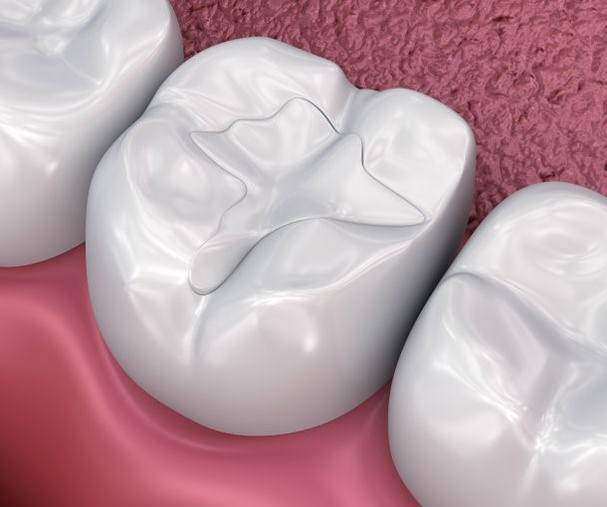
What Are Metal-Free Fillings?
Metal-free fillings, also known as tooth-colored fillings, composite fillings, or white fillings, are dental restorations made from composite resin materials. Unlike traditional silver amalgam fillings, metal-free fillings blend seamlessly with your natural tooth color, providing a more aesthetic and natural-looking smile.
These fillings are composed of a durable mixture of plastic resin and finely ground glass particles, designed to restore teeth affected by cavities, cracks, or minor damage while preserving their natural appearance.
Book OnlineBenefits of Metal-Free Dental Fillings
- Aesthetic Appeal
- Metal-free fillings are tooth-colored and virtually invisible, making them ideal for front or visible teeth.
- They enhance your smile without the dark, noticeable appearance of metal fillings.
- Conservative Approach to Tooth Structure
- Composite fillings bond directly to the tooth enamel and dentin, allowing dentists to remove less healthy tooth structure during preparation.
- This minimally invasive approach helps preserve more of your natural tooth, maintaining its strength and integrity.
- Strong and Durable
- Modern composite materials are highly durable and can withstand normal chewing forces.
- With proper care, metal-free fillings can last many years.
- Mercury-Free and Biocompatible
- Unlike amalgam fillings, metal-free fillings do not contain mercury or other metals, which appeals to patients concerned about potential health or environmental risks.
- Reduced Sensitivity
- Composite resin provides better insulation against temperature changes compared to metal fillings, often resulting in less tooth sensitivity.
FAQs About Metal-Free Fillings
Are metal-free fillings safe?
Yes. Composite resin materials have been used safely in dentistry for decades. They are biocompatible and free from mercury.
How long do metal-free fillings last?
With good oral hygiene and regular dental check-ups, composite fillings can last between 5 to 10 years or longer.
Do metal-free fillings require special care?
No special care is needed beyond normal brushing, flossing, and regular dental visits.
Are metal-free fillings more expensive than metal fillings?
They can be slightly more expensive due to material cost and the technique sensitivity required, but many patients find the aesthetic benefits worth the investment.
Can metal-free fillings be used for large cavities?
Yes, but for very large restorations, other options like inlays, onlays, or crowns might be recommended for optimal strength.
Conservative Dentistry: Less Tooth Reduction, More Tooth Preservation
One of the key advantages of metal-free fillings is their ability to preserve more natural tooth structure. Because composite resin bonds directly to the tooth, the dentist can remove only the decayed or damaged portion, leaving healthy enamel intact. This conservative approach helps:
- Maintain the tooth’s natural strength and function
- Reduce the risk of tooth fracture or further decay
- Preserve the tooth for potential future restorative options
Summary
Metal-free fillings offer a natural, strong, and health-conscious alternative to traditional metal fillings. Their conservative approach means less tooth removal, better aesthetics, and a safer material choice — making them an excellent option for restoring damaged teeth while maintaining your beautiful smile.
